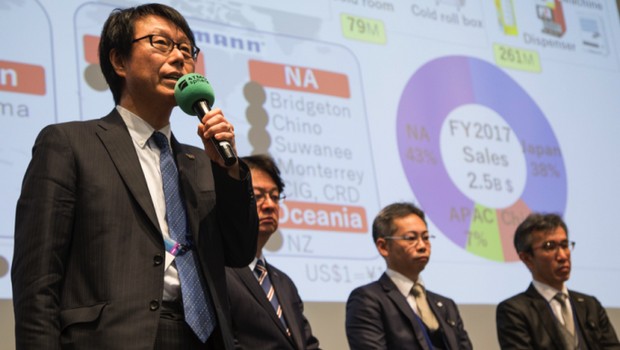Panasonic: ‘We want to make a CO2 family’

During the Technology Leadership Round Table session at ATMOsphere Japan 2018, Shigeru Dohno from Panasonic strongly emphasised the company’s commitment to natural refrigerants in response to the HFC phasedown targets enshrined in the Kigali Amendment to the Montreal Protocol.
“We as Panasonic want to promote natural refrigerant solutions to meet the [Kigali targets],” said Dohno.
Shigeru Dohno, managing director for Panasonic Appliances Company’s food retail equipment business division, explained how the Kigali Amendment is guiding the firm’s overall strategy for the next few years.
“If refrigeration equipment is installed as it is by end users today, there is a high possibility that they will have to reinvest in new equipment again in the near future,” said Dohno.
“Our goal is to reduce the risk of end users to have to reinvest in new refrigeration equipment as the HFC phasedown begins in Japan in 2019.”
To solve this issue, Dohno explained that Panasonic intends to lead the industry into further uptake of natural refrigerants.
“From our point of view, natural refrigerants should be introduced and promoted from the start,” he said.
Panasonic is already a world leader in terms of CO2 units installed in the market, with a total of 8,500 condensing units installed at 3,100 stores in Japan as of end 2017.
To continue this growth, Panasonic will be expanding its product portfolio of natural refrigerant systems and opening up their technology to be more compatible with other systems.
“At the moment, our natural refrigerant products are supplied to supermarkets and convenience stores. We want to expand our portfolio to include large-scale systems for logistics companies and warehouse companies,” he said.
“We want to make a CO2 family.”
Panasonic is now investing in research and development for its CO2 products through partnerships with Japan-based R&D firms.
For example, it is currently developing a water-cooled CO2 condensing unit with heat reclaim through its partnership with Japanese R&D firm Food Techno Engineering.
Dohno also explained that Panasonic is introducing simpler control systems in a bid to increase its customer base by making its technology more accessible.
“The use of CO2 requires complex pressure control systems, so, starting next year, we will be making it more simple for other devices to connect to our CO2 systems,” he said.
Dohno himself is a strong,believer in the potential of natural refrigerants to help the country achieve its Kigali commitments.
“I, myself, have a strong sense of crisis. If we continue with business as usual, we will not be able to achieve our HFC phasedown goals, so, as a nation, we have to put in more effort,” he said.
“This is our mission. Not just our role, but our mission, and we would like to continue to ask for your support,” he concluded.
